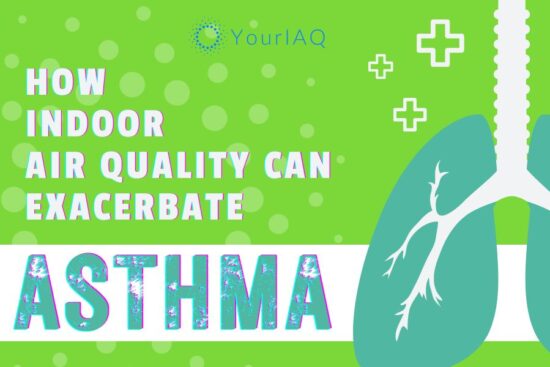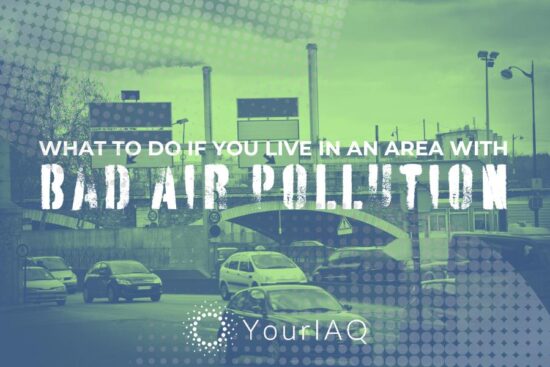
Indoor air quality air quality sometimes gets lumped in with outdoor pollution concerns. But did you know that indoor environments, such as public schools, often have worse air quality than outdoor areas? This begs the question: how much do we really know about air quality in schools?
We examine the issue a bit deeper by addressing the most frequently asked questions
1. Why Is Indoor Air Quality in Schools Important?
Children spend a significant chunk of their time in school. In some cases, classrooms become a second home. Ensuring good indoor air quality in schools isn’t just about comfort—it’s about health, cognitive function, and overall well-being.
According to the American Lung Association, children are more likely than adults to suffer from asthma and respiratory infections. Meanwhile, research shows breathing air with harmful contaminants can seriously harm lung and organ development in children.
Protecting indoor air quality should be on the short list of measures educators, administrators, and parents consider to create a healthy learning environment.
2. What Is the Current State of Air Quality in Public Schools in the U.S.?
Surprisingly, many school buildings, especially older ones, face challenges when it comes to air quality. From outdated HVAC systems to tight budgets that delay needed renovations, various factors can compromise the air children breathe.
Unfortunately, indoor air quality contributes to health problems in many public schools today. According to a CDC-supported study, asthma is one of the leading causes of public school absences in America. Asthma, allergies, and other respiratory sicknesses can be significantly worsened by breathing unhealthy indoor air.
Government agencies like the EPA have guidelines to monitor and improve air quality in educational institutions. Despite these efforts, a significant number of schools still fall short of the recommended standards.
“We’ve seen an encouraging increase in general indoor air quality awareness over the last two to three years,” said Tyler Smith, Vice President, Healthy Buildings at Johnson Controls in an article for Campus Safety Magazine. “But when it comes to understanding all of the benefits of improved IAQ, we’re still in the very early stages.”
3. What Are the Common Culprits of Poor Indoor Air Quality in Schools?
Several factors commonly degrade indoor air quality in school buildings:
- Mold and Mildew: Often stemming from high humidity, moisture problems, or water damage.
- Volatile Organic Compounds (VOCs): Emitted by paints, cleaners, furniture, and construction materials.
- Poor Ventilation: Especially in older school buildings that lack modern HVAC systems.
- Dust and Allergens: Resulting from inadequate cleaning practices or materials used in construction.
Other concerns include pollution from wildfires, particulate matter from industry and combustion engines (traffic), and high levels of carbon dioxide, which rise as the school day goes on.
4. What Is the Impact of Poor Indoor Air Quality on Students?
Poor indoor air quality isn’t just about a stuffy room. As noted above, it’s associated with various health issues like asthma, allergies, and respiratory infections. Additionally, studies show a tangible link between air quality and cognitive function. The air students breathe can affect their concentration, memory, and overall academic performance.
A 2021 Lancet report found that ventilation and air purification can lead to reduced school absences, improved math and reading performance, higher testing scores, and decreased symptoms of illness for teachers.
5. How Can We Improve Air Quality in Schools?
Thankfully, there are tangible steps public schools can take to improve indoor air quality. These include:
- Regular Maintenance: Ensuring that HVAC systems are updated and working efficiently.
- Health-conscious Renovations: Opting for low-VOC paints and eco-friendly building materials.
- Air Purification: Investing in air purifiers to filter out common pollutants.
- Better Awareness: Engaging broader local school communities to maintain a clean environment.
Professional associations like the National Association of School Nurses are among the allies in leading these changes, offering guidelines and resources to schools nationwide.
6. Who Is Responsible for Improving Indoor Air in Schools?
Improving indoor air quality in schools starts with school administrators, but should be a collective goal. Parents, teachers, and students can be advocates. Federal, state, and local governments also play a role in enacting healthy policies.
Steps these bodies can take include understanding the significance of clean air, advocating for healthy regulations, and taking proactive steps to monitor indoor air and reduce pollutants before problems arise.
7. Why Is Air Quality in Schools Often Overlooked?
With tight budgets and numerous priorities, air quality might not always be at the forefront for school administrations, though it’s crucial for student health and performance.
8. Do Newer Schools Have Fewer Air Quality Issues?
Not necessarily. Even newer buildings can face challenges if not maintained properly or if constructed with materials that emit VOCs. Additionally, some problems have nothing to do with construction. For example, radon is a natural gas emitted from the ground that can create an air quality issue anywhere. Outdoor pollution in industrial or high traffic zones is also a problem for new and old buildings alike.
9. How Can Parents Help?
Parents play a key role in helping improve air quality in schools. By advocating for better indoor air quality standards, staying informed, and volunteering for school initiatives aimed at improving air quality, the voice of parents can make a difference.
10. What Is the Role of Government Agencies in Improving School Air Quality?
Government agencies set guidelines, offer resources, and sometimes provide funding to help schools achieve better indoor air quality. There are presently no national standards for indoor air quality in schools, or elsewhere. Multiple federal agencies provide guidance and support to communities, including the EPA, OSHA, HUD, CDC, and NIH.
11. Are Air Purifiers Effective in Large Classrooms?
When chosen correctly, air purifiers are effective in classrooms. It’s essential to select purifiers designed for larger spaces and to ensure they are regularly maintained. According to the Harvard T.H. Chan School of Public Health’s Healthy Buildings program, the use of air purifiers was an important component in its recommendations for how to safely reopen schools after COVID closures.
Further Reading:
- Indoor Air Quality FAQ
- Workplace Air Quality: What to Do When Your Office Air is Unhealthy
- Clean Air Centers: A Promising Solution for Indoor Air Quality?






